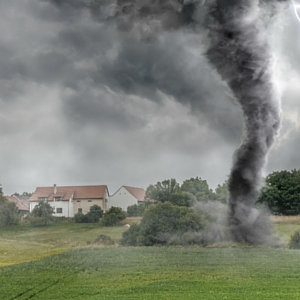Tornado Safety – Plan, Prepare, React

Each spring, tornadoes tear through parts of the U.S., threatening lives and destroying property. If you live in an area affected by twisters, here are a few safety tips for the upcoming storm season.
Establish a Plan
Walk through your home and consider where you'll establish your tornado safe room. Find the safest area within your home, usually a basement or small room in the center of your house without any windows. Make sure the room is easily accessible during an emergency, but remember: the more walls between you and the outdoors the better!
Design for Safety
Consider changing the landscaping around your home. Keep your trees and shrubs trimmed to prevent them from damaging your home during a storm. Try replacing rock and gravel material with shredded bark where possible. Bark will cause do less damage than rock when carried at high wind speeds.
If you are currently building a home, consider adding a storm shelter to your design plans. For more information visit the National Storm Shelter Association or FEMA.
Prepare for the Worst
Once you have a designated safe room, get a disaster supply kit ready to go. Here are recommended items to have on hand:
- First aid kit, including any prescription medications
- Water and food that won't spoil. A three day supply is generally recommended.
- Flashlight, with extra working batteries
- Portable hazard radio
- Signaling devices, such as an air horn
- Change of clothes and footwear for you and your family
- Extra set of car keys, credit cards and cash
- Any other special items for an infant, elderly or disabled family member
- Important documents, such as your insurance policies
If you have time, grab your shoes, cell phone and purse or wallet before heading to the safe room. Create a family escape route from your home and designate an emergency meeting place in case you are separated during the storm.
React!
When the weather radio or local sirens indicate a tornado warning, get to your safe room as soon as possible. Do not open any windows or doors to look outside. Gather your family and pets. Shut all your interior doors, if there is time. Keeping all exterior and interior doors closed will help compartmentalize your home, providing a more effective barrier between your family and the storm.
Even though it is tempting to see what is going on outside during a storm, this is a good time to remember that it's better to be safe than sorry and stay in your safe room.
For more safety tips and information, visit DisasterSafety.org.
